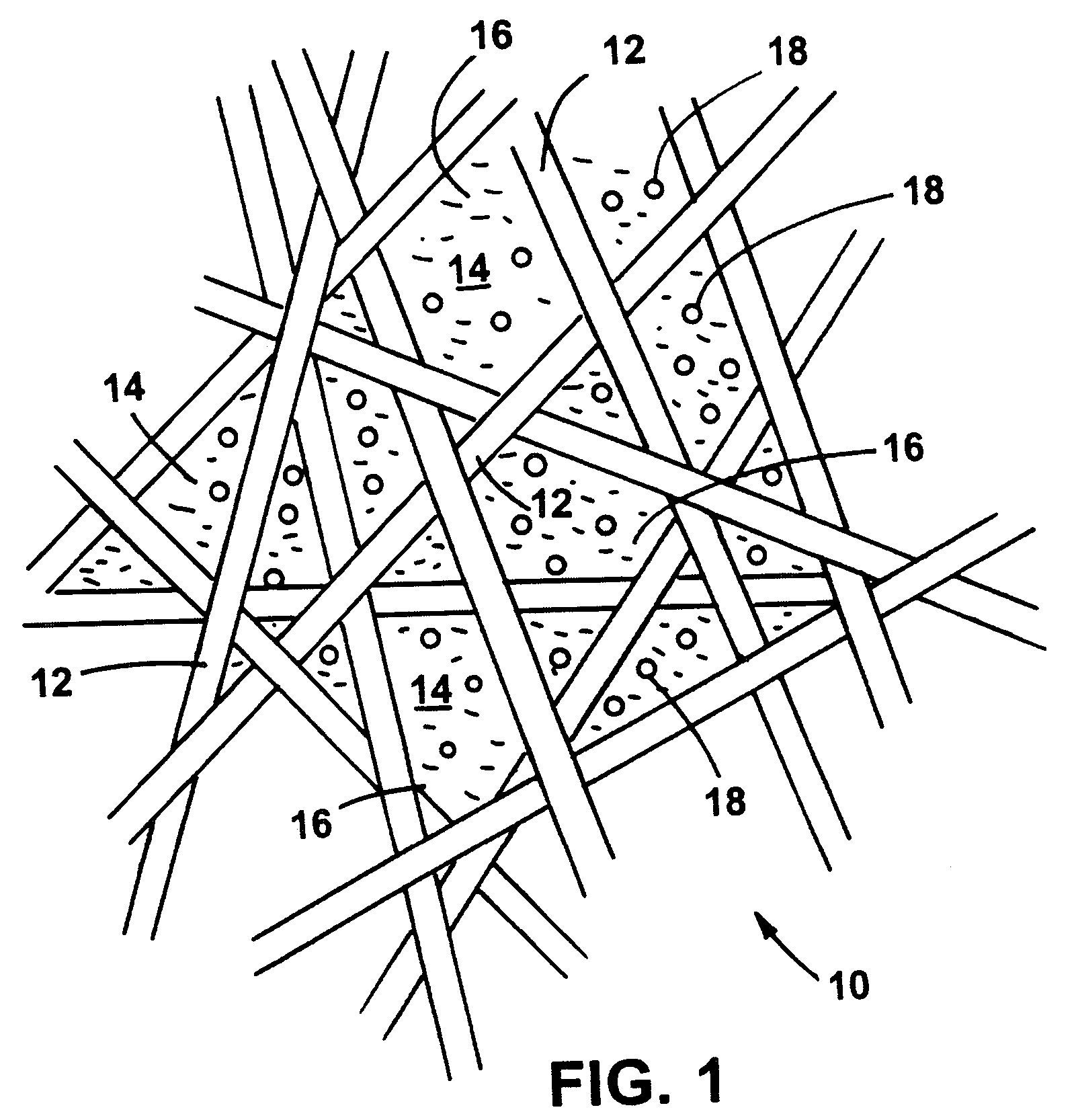Population of undifferentiated neural, endocrine or neuroendocrine cells in a hydrogel support
- Summary
- Abstract
- Description
- Claims
- Application Information
AI Technical Summary
Benefits of technology
Problems solved by technology
Method used
Image
Examples
example 1
Preparation of a Calcium-Alginate-Chondrocyte Composition
[0128]A calcium alginate mixture is obtained by combining calcium sulfate, a poorly soluble calcium salt, with a 1% sodium alginate dissolved in a 0.1 M potassium phosphate buffer solution (pH 7.4). The mixture remains in a liquid state at 4° C., and until its temperature is increased to over 15° C. Chondrocytes are isolated from cartilage tissue, e.g., the articular surface of calf forelimbs, using standard techniques, and are added to the mixture to generate a final cellular density of about 2 to 5×107 / ml (e.g., representing approximately 10% of the cellular density of human juvenile articular cartilage). Such a mixture can be delivered into a permeable support structure.
example 2
Preparation of a Thermosensitive Hydrogel-Chondrocyte Composition
[0129]A biocompatible, biodegradable, reverse-thermosensitive copolymer gel was obtained by preparing a 30% weight / volume solution of a PLURONIC™ F127, F68 block copolymer (available from BASF). The solution remains in a liquid state at less than 15° C., and solidifies within 5 to 10 minutes as the temperature is increased to over 15° C. Chondrocytes were isolated from the articular surface of calf forelimbs using standard techniques, and added to the hydrogel mixture to generate a final cellular density of about 2 to 6×107 / ml. Such a mixture can be delivered into a permeable support structure.
example 3
Guided Tissue Growth of a Distal Femur in a Rat Using a Permeable Support Structure
[0130]In this example, a synthetic, biocompatible polymer support structure was used to guide the development of new bone tissue formed from a hydrogel-cell composition to replace the distal femur in a rat.
[0131]A rat was sacrificed and its distal femur removed. The bone was immersed into liquid in a graduated cylinder to measure the volume displaced by the bone, which was approximately 1 cc. Thereafter, an external mold of the femur was made using standard acrylic molding techniques. Using the external mold, a porous support structure composed of polyglycolic and polylactic acid was created as follows.
[0132]Polyglycolic acid fibers, 14 microns in diameter, were entangled into a mesh in which the fibs are space from one another by an average of 150-250 microns. The fiber mesh was then immersed in a 1% solution of polylactic acid for about 10 seconds, when it became saturated. The solution, which has a...
PUM
| Property | Measurement | Unit |
|---|---|---|
| Temperature | aaaaa | aaaaa |
| Fraction | aaaaa | aaaaa |
| Fraction | aaaaa | aaaaa |
Abstract
Description
Claims
Application Information
 Login to View More
Login to View More - R&D
- Intellectual Property
- Life Sciences
- Materials
- Tech Scout
- Unparalleled Data Quality
- Higher Quality Content
- 60% Fewer Hallucinations
Browse by: Latest US Patents, China's latest patents, Technical Efficacy Thesaurus, Application Domain, Technology Topic, Popular Technical Reports.
© 2025 PatSnap. All rights reserved.Legal|Privacy policy|Modern Slavery Act Transparency Statement|Sitemap|About US| Contact US: help@patsnap.com

